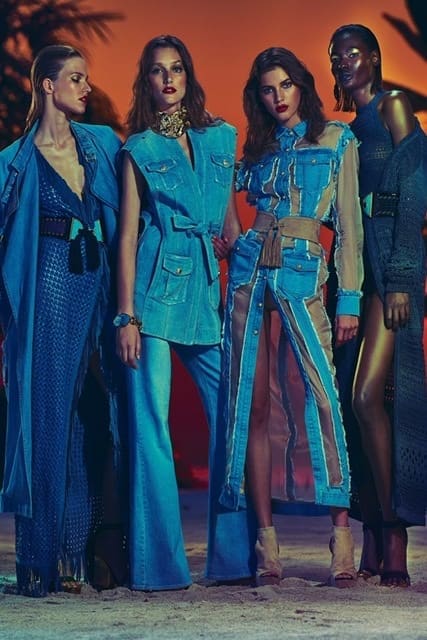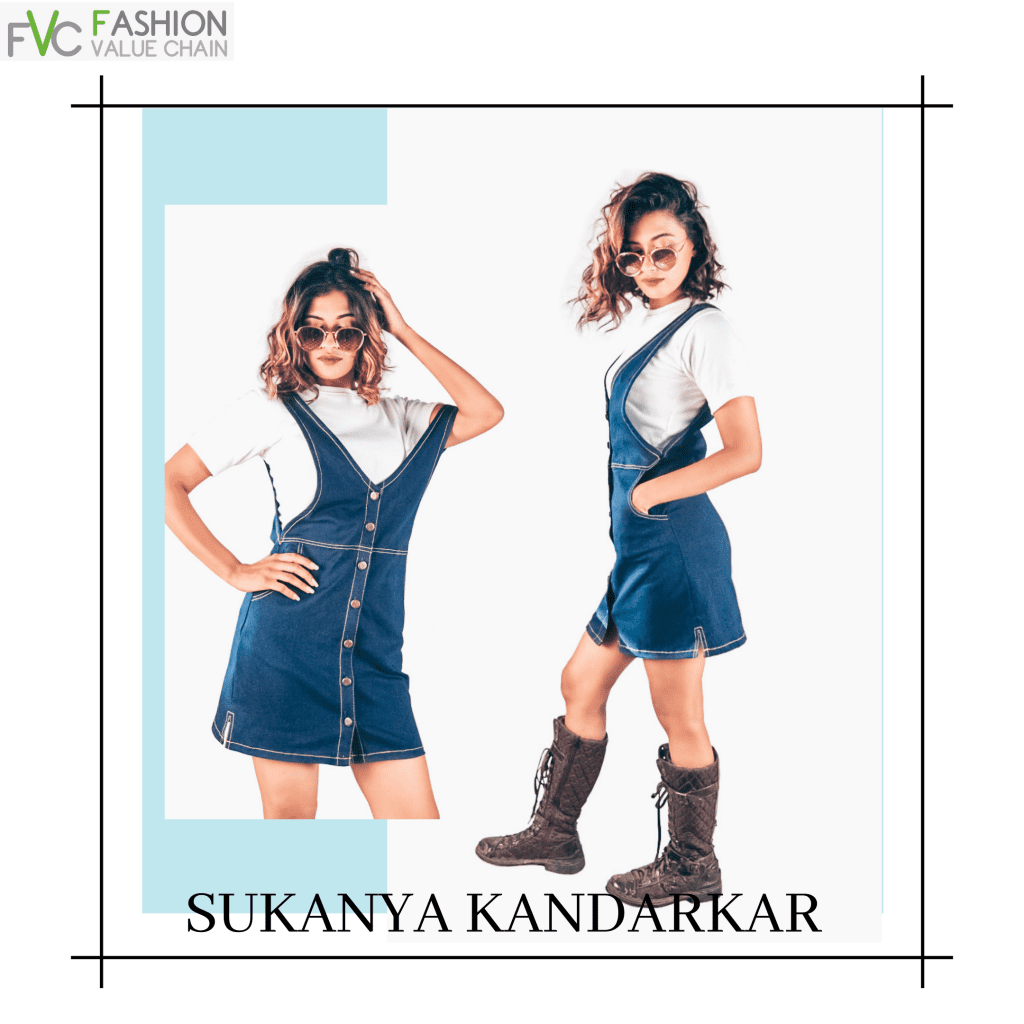The magic of denim jeans has overpowered the global right from the day it was invented. History has seen its development through many ages and periods. Sustainability and recycling is the buzz word today, and all stake holders in the apparel supply chain right from manufacturers to consumers are working toward this cause. This focus has called for research and development all over the world to undertake many issues related to denim recycling to make the best use of used materials for new product development. Many retailers take immense efforts to showcase their involvement in the closed-loop recycling initiative by encouraging consumers to bring back old used garments for new ones and converting these garments for the manufacture of raw materials or intermediate substances. Manufacturing compostable jeans without the use of nylon threads and rivets shows the change in the manufacturing process, and new technologies are in the pipeline to recycle fibers from denim with unchanged quality. The governmental support has also been extended by means of many programs on solid waste management, reduction of load to landfill by reuse and recycling and laws and regulations for environmental protection. This chapter deals with the importance of denim and its impact on society, manufacturing and landfill issues, the technologies involved in the reuse and recycling of denim, the appraisal of work done by many organizations around the globe to recycle denim for regenerated textiles and reclaimed products along with the roadmap for denim recycling in terms of sustainability. Denim, one of the most widely used material in the world, has significant impact on environment in manufacturing and waste management stage. Denim recycling has opened vast opportunities for savings in the use of raw materials, energy and water consumption, chemicals and auxiliaries and waste water treatment. Reprocessed fibers from denim waste have the coloration from the raw material used, and hence, dyeing and finishing processes can be eliminated to a great extent. Many leading retailers like H & M, Adidas and Nike showcase and market their products with the percentage of recycled material in the product profile; their statistical reports reveal the quantity of clothes they have collected from their shoppers and the amount they contribute to international charity from their proceeds.
Raising the awareness of the consumer’s contribution toward sustainability and environment safety has paved the increase in recycling of not only denim but also many other materials that are used today. The focus should move toward manufacturing products without waste, and if waste occurs, it should be recycled to lead to a zero waste economy.
A growing population, rising standards of living and quickly changing fashions send mountains of clothing waste to the world’s landfills each year. Although processes for textile recycling exist, they tend to be inefficient and expensive. Now, researchers have reported in ACS Sustainable Chemistry & Engineering an efficient, low-cost method that can convert waste denim into viscose-type fibers that are either white or the original color of the garment.
Cotton-based clothing, such as denim, makes up a large proportion of textile waste. Meanwhile, farming cotton consumes land and resources. Efficiently converting waste denim into reusable cotton fibers could help address both of these problems. Previously, researchers have used ionic liquids –– salts that are liquid, not solid –– to dissolve cotton textiles into their cellulose building blocks. The cellulose was then spun into new viscose-type fibers that could be woven into textiles. However, ionic liquids are expensive and difficult to work with because of their high viscosity. Nolene Byrne and colleagues wanted to find a way to reduce the amount of ionic liquid solvent required to recycle denim into regenerated cellulose fibers.
The researchers ground three textile samples (blue denim fabric, red denim pants and a mixed-color T-shirt) into powders. Then, they dissolved the powders in a 1:4 mixture of the ionic liquid 1-butyl-3-methylimidazolium acetate and dimethyl sulfoxide (DMSO). Using a high concentration of DMSO as a co-solvent allowed the researchers to use much less ionic liquid than other methods. In addition, DMSO reduced the viscosity of the ionic liquid solution, making it easier to spin the cellulose into new fibers. Because DMSO is much cheaper than the ionic liquid, the new process reduced the cost of solvent by 77%. When they pre-treated the textile powders with a sodium hydroxide solution, the researchers could produce white viscose-like fibers. Without this step, the fibers retained the color of the original item, which conserves water and energy that would otherwise be required for textile dyIncrease in population has driven the demand for consumer goods, which ultimately results in more quantities of landfills. This is not only depleting the available natural resources, but is also deteriorating the environment. Recycling and reusing products is the need of the hour. Denim apparels have become an inevitable part of every individuals wardrobe. Old and used denims can be creatively recycled into unimaginable, creative, and useful products.
Recycled denims are adorable for a number of reasons. It is basically made from post industrial denim fabrics, which is scrap. Furthermore the energy spent in recycling old materials is lesser comparatively over the energy spent in converting raw materials into products.
Recycled denims are a great and creative way to dress up while going ones contribution to the environment as well. Recycled products have the lowest carbon footprint. So its time to recycle, reuse, and reduce carbon footprints.
Denim is study cotton warp faced textile in which the weft passes under loom or warp threads. These will weave produces a diagonal ribbing that distinguishes it from Cotton duck. The most common denim is indigo denim in which threads are dyed while the weft thread is left white. As are the result of the warp faced twill weaving one side of the textile is dominated by the blue warp threads and other side is dominated by the White weft threads. This causes blue jeans to be white on the inside. The indigo dyeing process, in which the core of warp threads remains white, creates denims signature fading characteristics.
Why the material of your jeans matter ?
There’s a type of fabric that’s taking over what jeans are made of – stretch denim. This denim cotton includes a small amount of elastane, about one to three percent, into the fabric, which makes it the closest blend to pure denim. If you’ve ever heard of Spandex or Lycra, you’ve felt this stretchy, synthetic fiber. It is what gives jeans more flexibility. Stretch jeans are popular because they present more “give” with body movements. Any woman would look great in stretch jeans.
New Prime Twill
Twill fabrics are woven differently than regular denim. Twill is made by using a specific weave called diagonal ribbing. Twill denim is lighter in weight, but more durable and resists wear longer than a regular weaved fabric. Our new prime twill denim is made with 55% rayon, 24% cotton, 18% polyester and 3% spandex. These pants are a little extra stretchy and super comfortable, and have a superior premium feel to them.
100% Cotton Denim
This type of fabric will always stretch out regardless of what you do even though there is not any stretch in the fabric. When the cotton threads enlarge from wear, they’ll never be able to go back to the true size they were before. An indigo dye is often used to dye these jeans, however, 100% cotton blends are very easy to dye. 100% cotton denim quickly went out of style with the introduction of stretch denim but is now slowly making its way back in style with the introduction of fashionable “mom jeans” and “dad jeans.”
98/2 Stretch Blends
A 98% cotton and 2% elastane pair of jeans stretch out, but not as dramatically as 100% cotton fabric. These jeans are likely to get baggier over time and not bounce back because they have some stretch in them that causes them to not have much recovery. These jeans tend to be a crowd favorite due to their genuine 100% cotton appearance, but stretch and comfortable feel when wearing them.
Super Stretch
This fabric is extremely popular due to the comfort and flexibility. You have to be careful to get these in your size so they don’t lose their shape once they’ve expanded. Super stretch started the trend for jeggings back in the mid-2000s and have stayed around in casualwear and athleisure wear, but do not frequently professional or evening wear.
So guys, love your friend denim !! Dont throw them away because old is gold so you preserve it and dont loose the best. This universally loved fabric denim is your friend everytime you are confused what to go with for the day!! So the epitome of love given to the fabric should be always preserved and upcycled in the beautiful way possible !




